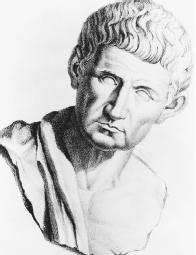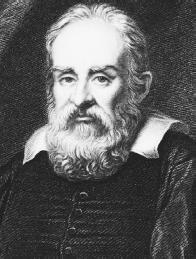Kinematics and Dynamics - How it works
The Place of Physics in the Sciences
Physics may be regarded as the queen of the sciences, not because it is "better" than chemistry or astronomy, but because it is the foundation on which all others are built. The internal and interpersonal behaviors that are the subject of the social sciences (psychology, anthropology, sociology, and so forth) could not exist without the biological framework that houses the human consciousness. Yet the human body and other elements studied by the biological and medical sciences exist within a larger environment, the framework for earth sciences, such as geology.
Earth sciences belong to a larger grouping of physical sciences, each more fundamental in concerns and broader in scope. Earth, after all, is but one corner of the realm studied by astronomy; and before a universe can even exist, there must be interactions of elements, the subject of chemistry. Yet even before chemicals can react, they have to do so within a physical framework—the realm of the most basic science—physics.
The Birth of Physics in Greece
THE FIRST HYPOTHESIS.
Indeed, physics stands in relation to the sciences as philosophy does to thought itself: without philosophy to provide the concept of concepts, it would be impossible to develop a consistent worldview in which to test ideas. It is no accident, then, that the founder of the physical sciences was also the world's first philosopher, Thales (c. 625?-547? B.C. ) of Miletus in Greek Asia Minor (now part of Turkey.) Prior to Thales's time, religious figures and mystics had made statements regarding ethics or the nature of deity, but none had attempted statements concerning the fundamental nature of reality.
For instance, the Bible offers a story of Earth's creation in the Book of Genesis which was well-suited to the understanding of people in the first millennium before Christ. But the writer of the biblical creation story made no attempt to explain how things came into being. He was concerned, rather, with showing that God had willed the existence of all physical reality by calling things into being—for example, by saying, "Let there be light."
Thales, on the other hand, made a genuine philosophical and scientific statement when he said that "Everything is water." This was the first hypothesis, a statement capable of being scientifically tested for accuracy. Thales's pronouncement did not mean he believed all things were necessarily made of water, literally. Rather, he appears to have been referring to a general tendency of movement: that the whole world is in a fluid state.
ATTEMPTING TO UNDERSTAND PHYSICAL REALITY.
While we can respect Thales's statement for its truly earth-shattering implications, we may be tempted to read too much into it. Nonetheless, it is striking that he compared physical reality to water. On the one hand, there is the fact that water is essential to all life, and pervades Earth—but that is a subject more properly addressed by the realms of chemistry and the biological sciences. Perhaps of more interest to the physicist is the allusion to a fluid nature underlying all physical reality.
The physical realm is made of matter, which appears in four states: solid, liquid, gas, and plasma. The last of these is not the same as blood plasma: containing many ionized atoms or molecules which exhibit collective behavior, plasma is the substance from which stars, for instance, are composed. Though not plentiful on Earth, within the universe it may be the most common of all four states. Plasma is akin to gas, but different in molecular structure; the other three states differ at the molecular level as well.
Nonetheless, it is possible for a substance such as water—genuine H 2 O, not the figurative water of Thales—to exist in liquid, gas, or solid form, and the dividing line between these is not always fixed. In fact, physicists have identified a phenomenon known as the triple point: at a certain temperature and pressure, a substance can be solid, liquid, and gas all at once!
The above statement shows just how challenging the study of physical reality can be, and indeed, these concepts would be far beyond the scope of Thales's imagination, had he been presented with them. Though he almost certainly deserves to be called a "genius," he lived in a world that viewed physical processes as a product of the gods' sometimes capricious will. The behavior of the tides, for instance, was attributed to Poseidon. Though Thales's statement began the process of digging humanity out from under the burden of superstition that had impeded scientific progress for centuries, the road forward would be a long one.
MATHEMATICS, MEASUREMENT, AND MATTER.
In the two centuries after Thales's death, several other thinkers advanced understanding of physical reality in one way or another. Pythagoras (c. 580-c. 500
B.C. ) taught that everything could be quantified, or related to numbers. Though he entangled this idea with mysticism and numerology, the concept itself influenced the idea that physical processes could be measured. Likewise, there were flaws at the heart of the paradoxes put forth by Zeno of Elea (c. 495-c. 430 B.C. ), who set out to prove that motion was impossible—yet he was also the first thinker to analyze motion seriously.
In one of Zeno's paradoxes, he referred to an arrow being shot from a bow. At every moment of its flight, it could be said that the arrow was at rest within a space equal to its length. Though it would be some 2,500 years before slow-motion photography, in effect he was asking his listeners to imagine a snapshot of the arrow in flight. If it was at rest in that "snapshot," he asked, so to speak, and in every other possible "snapshot," when did the arrow actually move? These paradoxes were among the most perplexing questions of premodern times, and remain a subject of inquiry even today.
In fact, it seems that Zeno unwittingly (for there is no reason to believe that he deliberately deceived his listeners) inserted an error in his paradoxes by treating physical space as though it were composed of an infinite number of points. In the ideal world of geometric theory, a point takes up no space, and therefore it is correct to say that a line contains an infinite number of points; but this is not the case in the real world, where a "point" has some actual length. Hence, if the number of points on Earth were limitless, so too would be Earth itself.
Zeno's contemporary Leucippus (c. 480-c. 420 B.C. ) and his student Democritus (c. 460-370 B.C. ) proposed a new and highly advanced model for the tiniest point of physical space: the atom. It would be some 2,300 years, however, before physicists returned to the atomic model.
Aristotle's Flawed Physics
The study of matter and motion began to take shape with Aristotle (384-322 B.C. ); yet, though his Physics helped establish a framework for the discipline, his errors are so profound that any praise must be qualified. Certainly, Aristotle was one of the world's greatest thinkers, who originated a set of formalized realms of study. However, in Physics he put forth an erroneous explanation of matter and motion that still prevailed in Europe twenty centuries later.
Actually, Aristotle's ideas disappeared in the late ancient period, as learning in general came to a virtual halt in Europe. That his writings—which on the whole did much more to advance the progress of science than to impede it—survived at all is a tribute to the brilliance of Arab, rather than European, civilization. Indeed, it was in the Arab world that the most important scientific work of the medieval period took place. Only after about 1200 did Aristotelian thinking once again enter Europe, where it replaced a crude jumble of superstitions that had been substituted for learning.
THE FOUR ELEMENTS.
According to Aristotelian physics, all objects consisted, in varying degrees, of one or more elements: air, fire, water, and earth. In a tradition that went back to Thales, these elements were not necessarily pure: water in the everyday world was composed primarily of the element water, but also contained smaller amounts of the other elements. The planets beyond Earth were said to be made up of a "fifth element," or quintessence, of which little could be known.
The differing weights and behaviors of the elements governed the behavior of physical objects. Thus, water was lighter than earth, for instance, but heavier than air or fire. It was due to this difference in weight, Aristotle reasoned, that certain objects fall faster than others: a stone, for instance, because it is composed primarily of earth, will fall much faster than a leaf, which has much less earth in it.
Aristotle further defined "natural" motion as that which moved an object toward the center of the Earth, and "violent" motion as anything that propelled an object toward anything other than its "natural" destination. Hence, all horizontal or upward motion was "violent," and must be the direct result of a force. When the force was removed, the movement would end.
ARISTOTLE'S MODEL OF THE UNIVERSE.
From the fact that Earth's center is the destination of all "natural" motion, it is easy to comprehend the Aristotelian cosmology, or model of the universe. Earth itself was in the center, with all other bodies (including the Sun)

Of course, virtually every precept within the Aristotelian system is incorrect, and Aristotle compounded the influence of his errors by promoting a disdain for quantification. Specifically, he believed that mathematics had little value for describing physical processes in the real world, and relied instead on pure observation without attempts at measurement.
Moving Beyond Aristotle
Faulty as Aristotle's system was, however, it possessed great appeal because much of it seemed to fit with the evidence of the senses. It is not at all immediately apparent that Earth and the other planets revolve around the Sun, nor is it obvious that a stone and a leaf experience the same acceleration as they fall toward the ground. In fact, quite the opposite appears to be the case: as everyone knows, a stone falls faster than a leaf. Therefore, it would seem reasonable—on the

Today, of course, scientists—and indeed, even people without any specialized scientific knowledge—recognize the lack of merit in the Aristotelian system. The stone does fall faster than the leaf, but only because of air resistance, not weight. Hence, if they fell in a vacuum (a space otherwise entirely devoid of matter, including air), the two objects would fall at exactly the same rate.
As with a number of truths about matter and motion, this is not one that appears obvious, yet it has been demonstrated. To prove this highly nonintuitive hypothesis, however, required an approach quite different from Aristotle's—an approach that involved quantification and the separation of matter and motion into various components. This was the beginning of real progress in physics, and in a sense may be regarded as the true birth of the discipline. In the years that followed, understanding of physics would grow rapidly, thanks to advancements of many individuals; but their studies could not have been possible without the work of one extraordinary thinker who dared to question the Aristotelian model.
Comment about this article, ask questions, or add new information about this topic: